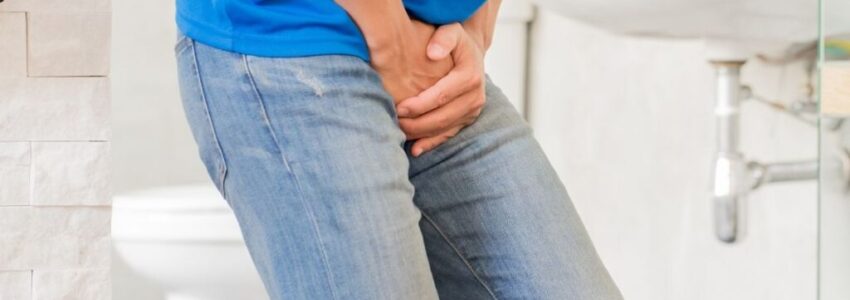
Originally published on fourseasonslasercenter.com
Using microdermabrasion for stretch marks is a relatively new practice. But it has already proven to be very effective in terms of reducing a stretch mark’s appearance.
Before microdermabrasion became a thing, stretch mark treatments usually consist of topical creams. Though some may also opt for pricier options like cosmetic surgery and laser therapy. Unfortunately, not all of us can afford them. So it’s no wonder why microdermabrasion became a popular alternative.
You may think that stretch marks are only common among pregnant women. But according to research, it is also prevalent among teenagers with up to 86% of them getting it.
Stretch marks aren’t that much of a health concern as it is an aesthetic one. But it can do a number on your self-confidence. Most people who have it tend to be more self-conscious, socially isolated, and have body image issues.
What Causes Stretch Marks?
There are a lot of reasons why people get stretchmarks. But in a nutshell, stretch marks happen when our skin stretches or sinks quickly. Our skin might be elastic but it has its limits. The sudden change causes the collagen and elastin supporting our skin to break apart. As the skin heals, stretch marks appear.
Though stretch marks are pretty common, the risk of getting one is increased during:
- Pregnancy. Baby bumps tend to stretch the skin to its limits thus creating stretch marks. It’s estimated that over 50% to 90% of women get stretch marks during and after pregnancy.
- Puberty. Growth spurts during puberty also cause the skin to stretch in such a short period of time leading to stretch marks.
- Bouts with certain diseases. If you are battling illnesses like Marfan and Cushing syndrome, that might be the reason behind your stretchmarks. Marfan syndrome reduces the skin’s elasticity making it prone to breakage. While Cushing syndrome encourages the production of growth hormones causing rapid growth in just a short timespan.
- Rapid weight gain. Gaining a lot of weight in just a short period of time also causes the skin to stretch to its limit.
Corticosteroid use. Corticosteroid creams and lotions, when used for extended periods can reduce our skin’s collagen level. With lesser collagen, our skin becomes more prone to stretch marks.

How Microdermabrasion Can Help With Stretch Marks
As its name suggests, mirodermabrasion is the process of gentle abrasions on the skin’s surface. It uses either a special abrasive device or sprays micro particles of aluminum oxide to sand away the skin’s topmost layer. Despite the seemingly painful process, microdermabrasion is generally safe and doesn’t cause that much discomfort.
So how does scraping your skin away help with stretch marks?
Microdermabrasion targets the epidermis (uppermost layer of the skin). While stretchmarks occur in the dermis (the skin layer right under the epidermis). Peeling away the epidermis through microdermabrasion helps reduce the appearance of stretch marks in two ways:
- It stimulates the skin to tighten the collagen and elastin fibers in the dermis making it more elastic.
- The exfoliating effect improves the overall skin appearance which makes stretch marks less apparent.
For the treatment to be more effective, it has to be repeated over a period of time. Your dermatologist will tell you how long and how often you need to get microdermabrasion. In general, it depends on your desired results and how severe your stretch marks are.
Remember, however, that no treatment has been proven to totally get rid of stretch marks. That includes microdermabrasion. This treatment only reduces its appearance and not a long-term solution. Stretch marks also tend to fade away over time. So if you’re looking to permanently get rid of it, you’ll just have to be patient.
Other Ways to Treat Stretch Marks
Aside from microdermabrasion, there are a number of other ways to treat stretch marks. This includes:
Home Remedies
Some of the most famous home remedies for stretch marks include:
- aloe vera extract
- coconut oil
- sugar
- vitamin A
- hyaluronic acid
Topical Creams
As mentioned, stretch marks are traditionally treated with topical creams. Most of them are also made of natural ingredients like vitamin E and rosehip oil among others. If you’re pregnant, check the ingredients and make sure it doesn’t contain retinoids. Healthline has an excellent list of topical creams for sretch marks.
Cosmetic Procedures
Cosmetic procedures for strecth marks include both invasive and non-invasive options. Microdermabrasion, laser therapy, and microneedling are among the less invasive. If these doesn’t work, you can opt for surgical procedures like tummy tuck which has more permanent results. But as with any cosmetic procedure, it’s always a good idea to talk to your doctor first.
Visit Our Five Star Med Spa In Boca Raton
Four Seasons Laser Center is a one of a kind medical spa in Boca Raton in that we have state of the art equipment and a beautiful facility. Book a free consultation with us today.







